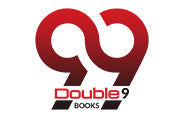This blog will shed light on what is a vanity publisher, compare vanity and traditional publishing, compare both kinds of publishing and their pros and cons. So, if you are looking to publish a book, read further to know. Embarking on a journey of publishing your book is an exciting adventure, but we must exercise caution as to which mode of publishing suits our needs.
What is Vanity Publishing?
A Vanity Press or a Vanity Publisher is sometimes also called a subsidy publisher, where the author pays to get published. The editors and publisher review the book proposal and the publisher takes care of printing, the distribution to online and offline retails and libraries. The royalty amount, raised from the book sales, varies between 7 to 25 percent.
What is a Traditional Publisher?
Traditional Publisher is an established model of publishing books through a publishing house. In this model, the author submits a manuscript to the publisher, which undergoes a screening process. The publishing house may take anything from 15 days to 6 months, depending upon the number of applications, to vet through the submissions and make a decision to publish or reject a book proposal. A traditional publisher does not charge the author for the services involved in publishing of a book, like editing, proof-reading, designing and typesetting, production, marketing and book distribution,
Vanity Publishing versus Traditional Publishing
Vanity Publishers are not selective about the books they publish; however, traditional publishers are very selective and the publisher may not approve your work. Authors may need to market their book on social media, but in case of traditional publishers, they market and distribute your book. Vanity Publishers provide 7 to 25% royalty in book publishing. In traditional publishing, 5 to 15 percent royalty is provided by most publishers to authors.
Vanity Publishers vs Traditional Publishers: Pros and Cons
Vanity Publishers do not share the cost of publishing and would provide greater royalties. In Traditional publishing, the author does not bear any expenses towards producing and selling of books, but in comparison may receive lesser royalty amount. Vanity publishers are not selective about the category or book genre they may publish. They publish any and all kinds of books. A traditional publisher has rigorous selection criteria, which you need to emulate to get published, for example: the quality of writing and book plot, number of words or pages in the manuscript, the detailing and presentation of a synopsis or book proposal. After much screening and reviewing of the proposal, you are selected to be published with them.
Vanity Publishers hires a publishing consultant to work on your project, after you select a service package. You do not need to undergo any assessing process. All they require is your manuscript to begin the process of publishing. The publishing time involved is much less in comparison. A significant advantage of getting published through a traditional publisher is that there are no upfront costs involved, and that the mainstream publishers have connections with all major bookstores in your city and the online selling platforms.
Vanity Publishing Vs Traditional Publishing Costs
Publishing a book with Vanity Press is an expensive deal, as compared to traditional publishing. The author may have to market their own book on social media platforms and require to buyback author copies to mitigate risks. Traditional publishing works out cheaper as the financial risk is shouldered by the company, services like editing, designing and marketing are provided free of cost. On the other hand, the process of selection is comparatively slower. You need to wait for a substantial duration like 1-3 months to get published.
In a nutshell, you must consider all your options while choosing the right associate - Vanity or traditional publishing. On completion of your manuscript, you can consider some vanity publishers like Abbot Press or traditional publishers like Rupa, Penguin Random House, HarperCollins, Pan Macmillan, Simon & Schuster. These publishers take over 6 months to screen your manuscript and may take one year or more to publish it. As an alternate you can consider younger traditional publishing house like Double9 Books, which is known to deliver at much faster pace in comparison.
Your dream to be a published author is finally over. Think of a publishing idea, write a synopsis of 30 pages, then, a book into 100 pages or more to meet the publishing criteria and turn your manuscript into a bestselling book. You can write a collection of poetry, fiction, non-fiction, biography, or any other genre that is close to your heart. Double9 Books specialises in making the journey of a manuscript into a book memorable, that people are likely to read and discover, along the way and help make your publishing journey a worthwhile experience and make your words count among the audience.







0 comments